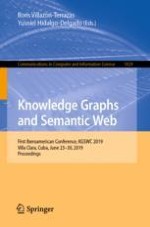2019 | Buch
Knowledge Graphs and Semantic Web
First Iberoamerican Conference, KGSWC 2019, Villa Clara, Cuba, June 23-30, 2019, Proceedings
herausgegeben von: Boris Villazón-Terrazas, Yusniel Hidalgo-Delgado
Verlag: Springer International Publishing
Buchreihe : Communications in Computer and Information Science
